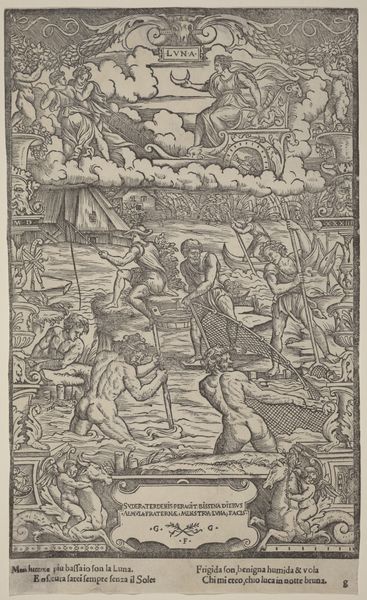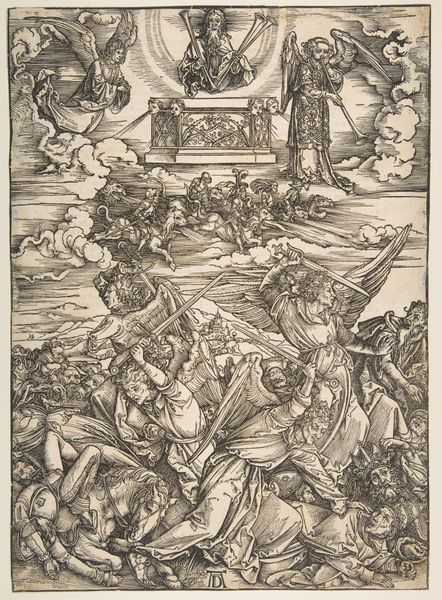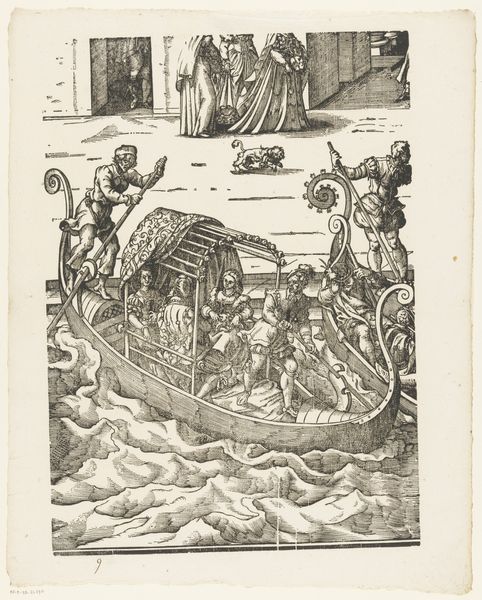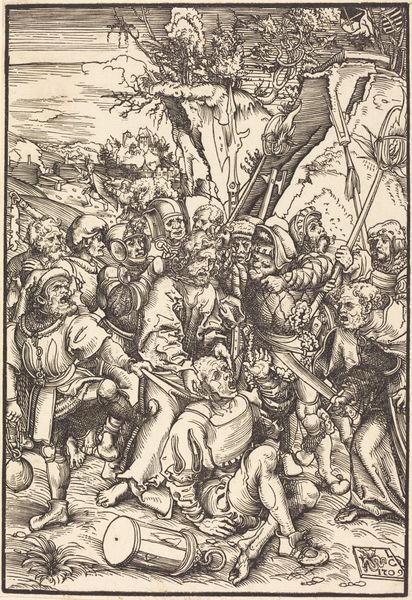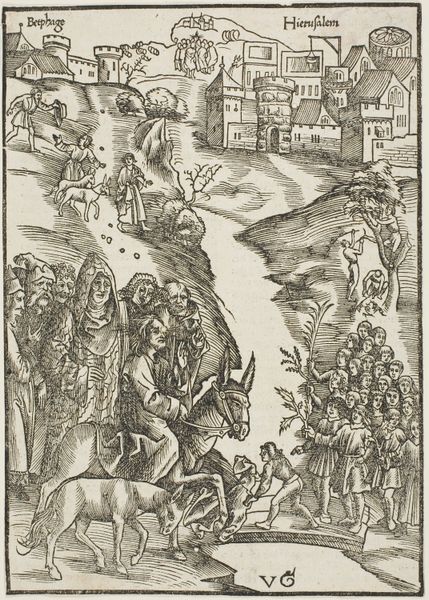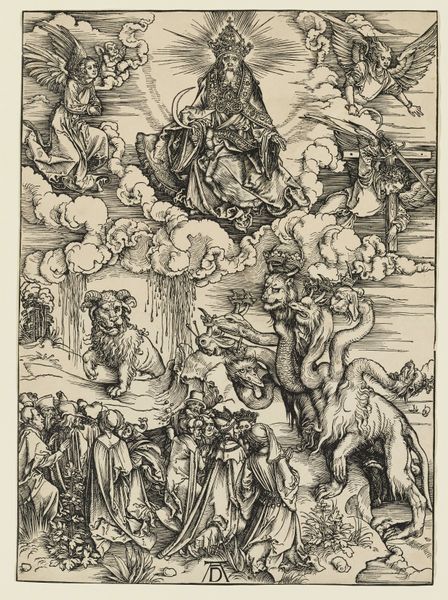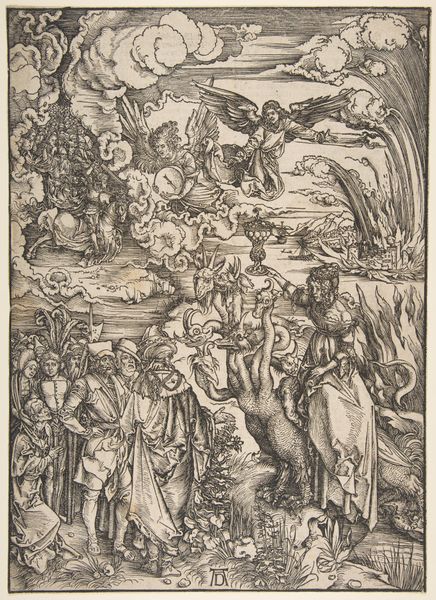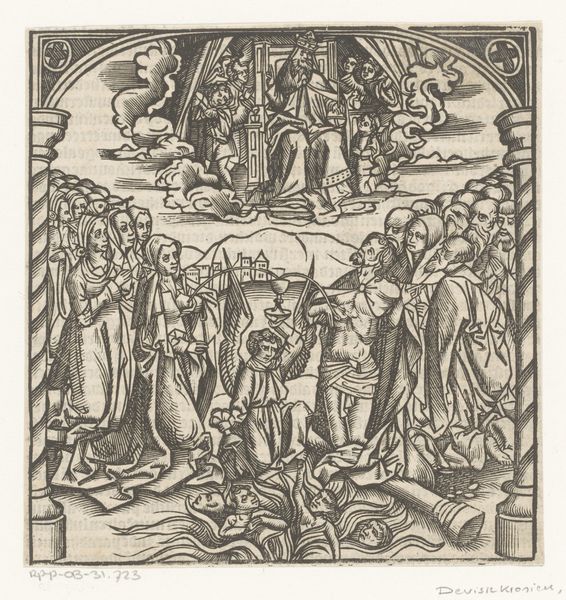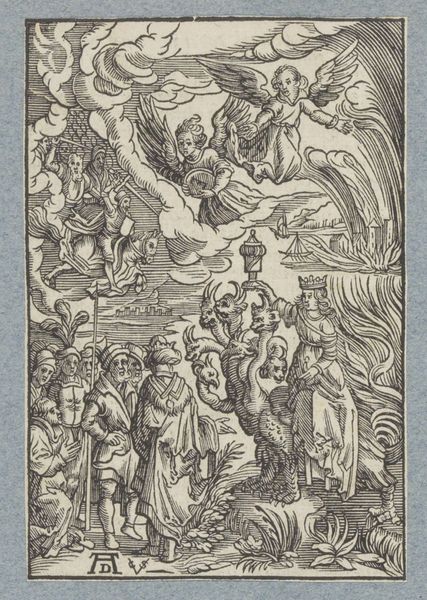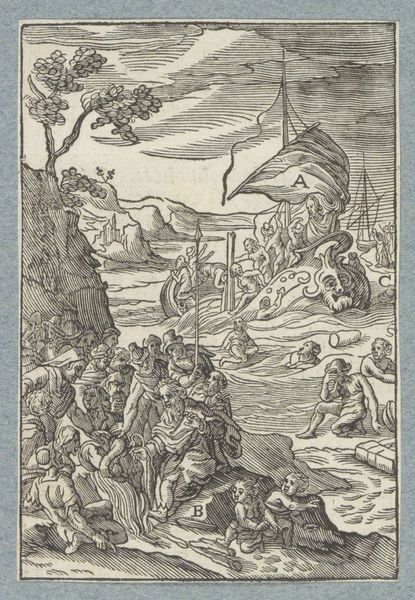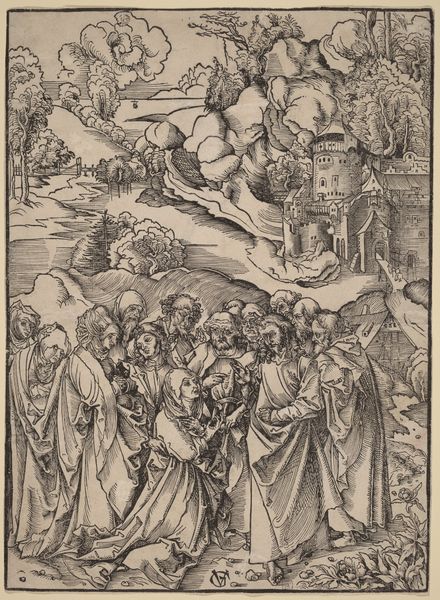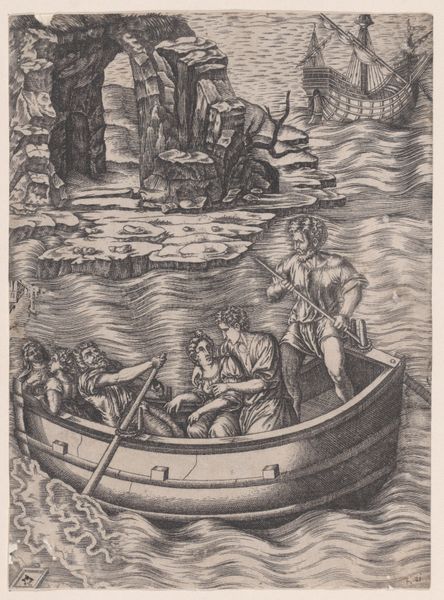
The Egyptians Crossing the Red Sea, from Das Buch Granatapfel 1511
0:00
0:00
drawing, print, woodcut, engraving
#
drawing
#
medieval
# print
#
pen illustration
#
pen sketch
#
landscape
#
figuration
#
woodcut
#
horse
#
men
#
history-painting
#
northern-renaissance
#
engraving
Dimensions: Sheet: 6 13/16 × 5 7/16 in. (17.3 × 13.8 cm)
Copyright: Public Domain
Editor: Okay, so we're looking at Hans Baldung’s "The Egyptians Crossing the Red Sea" from 1511. It’s a woodcut, currently residing at the Met. The first thing that strikes me is the dramatic contrast—the figures on one side look relatively safe while the others are clearly struggling in the water. How do you interpret this work, given its historical context? Curator: Well, the drama you perceive certainly aligns with the anxieties of the early 16th century. Consider the rise of printmaking as a democratizing force; images like these circulated widely, shaping public opinion and religious sentiment. This scene, taken from the Old Testament, wasn't just a biblical illustration; it was a potent symbol. Editor: A symbol of what exactly? Curator: Think about the Reformation brewing at the time. The image depicts divine intervention saving the Israelites from the Egyptians. Art historians like myself examine how people might see parallels to their own lives, to potentially to relate it to perceived oppressions by the Catholic Church. Does that begin to reframe the image for you? Editor: It does. The choice of woodcut, too, feels significant – a more accessible medium, meant for wider distribution than, say, a painting commissioned by the Church. The fact that it's a print immediately gives it a political dimension. Curator: Precisely! It's a visual argument, participating in the cultural and religious debates of its time. Beyond the religious context, how do you feel it affected the sense of national or regional identity through these sorts of stories? Editor: So, it is more than just a representation of the past, but rather part of active historical making through its role of educating the populace. Thank you! I never would have picked up on these dynamics at play if I was just looking at the picture on its own!
Comments
No comments
Be the first to comment and join the conversation on the ultimate creative platform.
